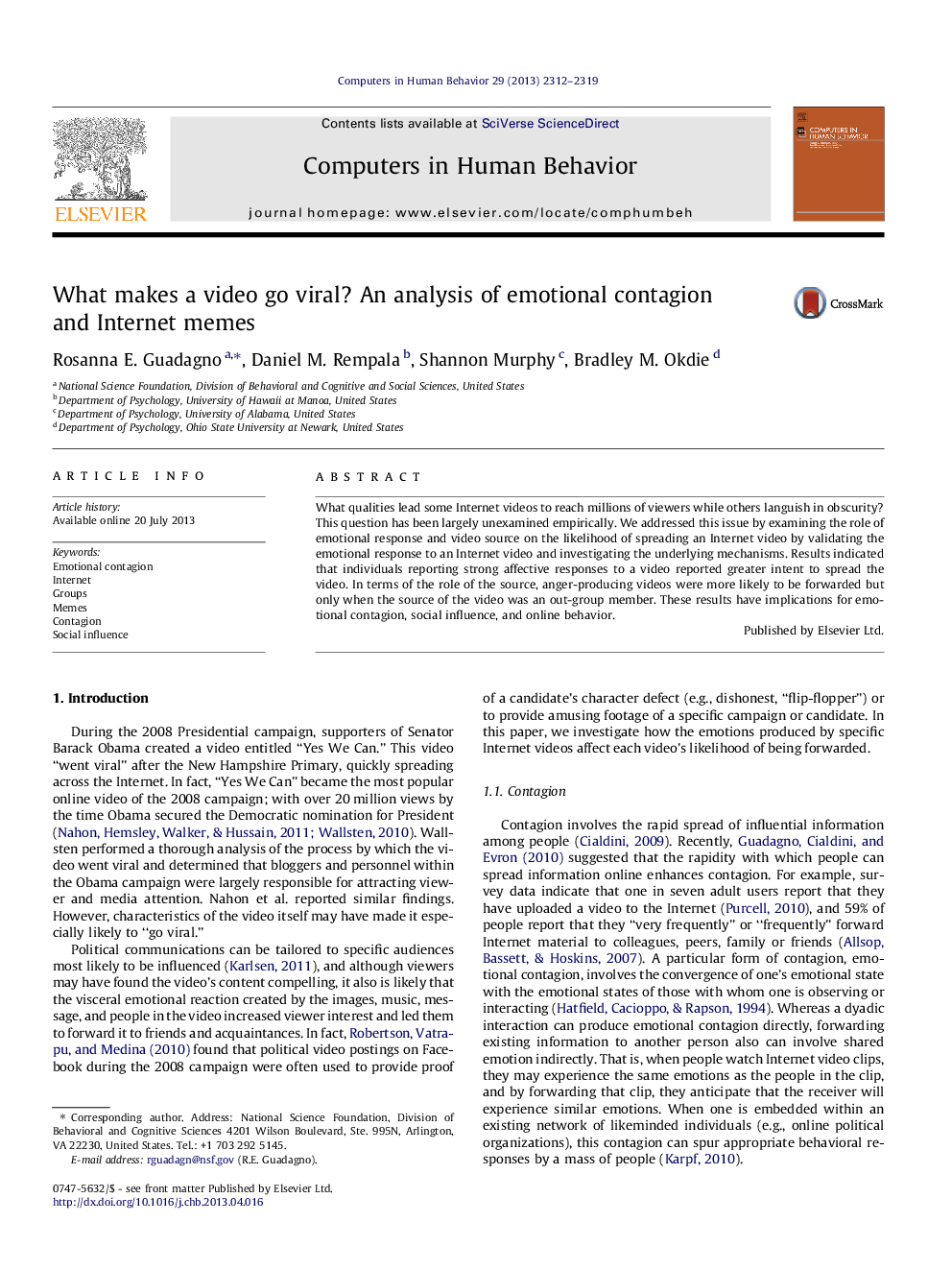| Article ID | Journal | Published Year | Pages | File Type |
|---|---|---|---|---|
| 350827 | Computers in Human Behavior | 2013 | 8 Pages |
•We examined emotional responses and video source on the likelihood of spreading an Internet video.•Individuals reporting strong affective responses to a video reported greater intent to spread it.•Anger-evoking videos were more likely to be forwarded when the video came from an out-group member.•Results have implications for social influence online.
What qualities lead some Internet videos to reach millions of viewers while others languish in obscurity? This question has been largely unexamined empirically. We addressed this issue by examining the role of emotional response and video source on the likelihood of spreading an Internet video by validating the emotional response to an Internet video and investigating the underlying mechanisms. Results indicated that individuals reporting strong affective responses to a video reported greater intent to spread the video. In terms of the role of the source, anger-producing videos were more likely to be forwarded but only when the source of the video was an out-group member. These results have implications for emotional contagion, social influence, and online behavior.
